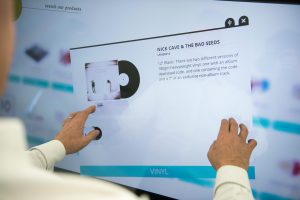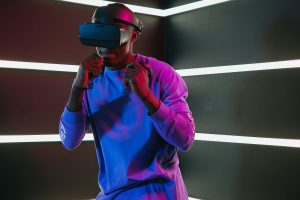AR Glasses for Real-Time Language Translation
Augmented reality (AR) glasses are becoming increasingly popular as technology continues to advance and improve. These high-tech devices not only offer an immersive and interactive experience, but they also have practical uses in our everyday lives. One such use is real-time language translation, where AR glasses are making it easier than ever to communicate with people from different countries and cultures. In this article, we’ll explore the technology behind AR glasses for real-time language translation and how they are revolutionizing the way we communicate.
The Need for Real-Time Language Translation
In today’s globalized world, language barriers are one of the biggest obstacles to effective communication. While learning a new language is always an option, it can be a time-consuming and challenging process. In situations where immediate communication is required, such as in a business setting or while traveling, traditional language barriers can cause frustration and hinder progress. This is where AR glasses for real-time language translation come in, providing a game-changing solution to this age-old problem.
How AR Glasses for Real-Time Language Translation Work
The technology behind AR glasses for real-time language translation involves speech recognition, natural language processing, and augmented reality. They use a combination of microphones, sensors, and algorithms to capture and interpret speech in one language and display the translation in real-time through the AR glasses. This allows the user to have a seamless conversation with someone who speaks a different language without the need for a human translator or language proficiency.
Speech Recognition
The foundation of AR glasses for real-time language translation is speech recognition. The built-in microphones accurately capture the user’s voice and convert it into digital data. This data is then processed and analyzed by advanced algorithms to identify the language being spoken and separate the words and phrases being used.
Natural Language Processing
Once the language is identified, the next step is natural language processing. This involves breaking down the spoken words and phrases into their individual components, including grammar, syntax, and context. Natural language processing plays a vital role in the accuracy of the translation, as it ensures that the translated text makes sense in the context of the conversation.
Augmented Reality Display
With the translated text now processed and ready to be displayed, the AR glasses use their augmented reality capabilities to overlay the text onto the user’s field of view. This creates an immersive and interactive experience, allowing the user to read the translation while still maintaining eye contact with the person they are speaking to.
Benefits of AR Glasses for Real-Time Language Translation
In addition to breaking down language barriers, AR glasses for real-time language translation offer a range of benefits that make them stand out from other translation methods. These include:
Efficiency
AR glasses provide a fast and efficient way to communicate with someone who speaks a different language. The real-time translation feature allows for a fluid conversation without any awkward pauses or delays.
Cost-Effective
In situations where a human translator would typically be required, AR glasses offer a cost-effective alternative. They eliminate the need for a third-party translator, saving time and money.
Convenience
AR glasses are compact and easy to carry, making them convenient for travel or business meetings. They can also be used in various settings, such as restaurants or tourist attractions, without causing any disruption.
Privacy
With AR glasses, there is no need for a translator to be physically present during a conversation. This provides a sense of privacy and allows for more open and honest communication.
The Future of AR Glasses for Real-Time Language Translation
As with any technology, AR glasses for real-time language translation are constantly evolving and improving. While they are already changing the way we communicate, we can expect to see even more advanced features and languages being added in the future. These glasses have the potential to bridge the language gap and bring people from different backgrounds and cultures closer together.
Conclusion
AR glasses for real-time language translation are a game-changer in the world of communication. Using state-of-the-art technology, these glasses provide an efficient, cost-effective, and convenient way to break down language barriers. With the constant evolution of this technology, we can anticipate a more interconnected and better-informed world, where communication is no longer a problem. AR glasses for real-time language translation are a prime example of how technology is making our lives easier and more connected than ever before.









